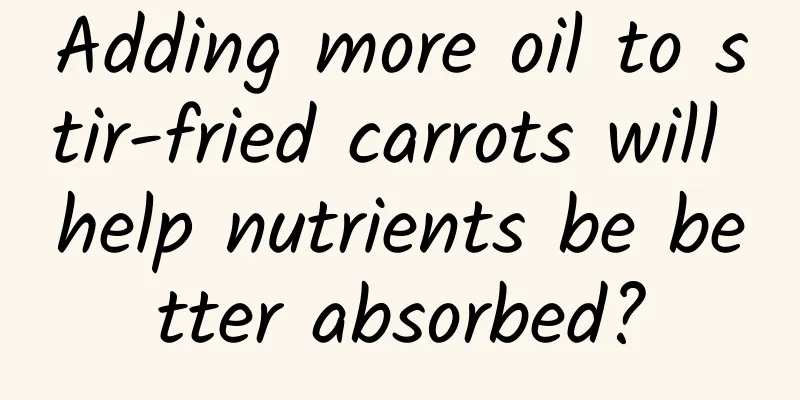The efficacy and function of Artemisia selengensis

|
Speaking of Artemisia selengensis, many people know that it is a Chinese medicinal material. So do you know the effects and functions of Artemisia selengensis? How should it be eaten? Let’s find out now. 【English name】 all-grass of Manybractelole Bugle [Source] Medicinal material source: It is the root of Ajuga bracteata of the Lamiaceae family. [Original form] Perennial herb. It has creeping stems that branch from the base. The branches are 10-30cm long and thin. The flower-bearing stems are erect, about 10cm high, and covered with long white hairs. Basal leaves are clustered on the ground; petioles are 1-1.5cm long, and the rest of the leaves are sessile; leaf blades are spoon-shaped or oblanceolate, 2-4cm long and 0.7-1.2cm wide, and stem leaves are obovate, sparsely covered with white hairs on both sides. The flower stem is slightly square, purple-red, with short internodes and white pubescence; the cymes are densely packed into pseudospikes above the stem tip in the leaf axils, gradually dense upwards, with 2 leaf-like bracts in each whorl, densely woolly or long pubescent, with notches and ciliates on the edges; the bracts and bracteoles are spoon-shaped, nearly entire, sparsely pubescent; the calyx is 5-lobed, with the calyx tube covered with pubescence outside; the corolla is white to light purple-blue, 2-lipped, with the corolla tube covered with pubescence outside, and the tube is densely covered with annular long pubescence about 1mm from the base, with blue-purple stripes on the throat, and the central lobe of the lower lip stained with purple-red spots; there are 4 stamens, didyna; the ovary is 4-lobed. There are 4 nutlets, which are oval, grayish yellow and wrinkled. Flowering period is April to June, and fruiting period is May to June. [Habitat distribution] Ecological environment: Growing in sparse grass on open hillsides at an altitude of 1500-1900m. 【Properties】 Identification: The whole plant is gray-green in color. The stem is slender and square-cylindrical, purple-red, densely covered with white soft hairs; there are roots on the creeping stem nodes. Basal leaves are spoon-shaped or oblanceolate, with long petioles; stem leaves are opposite, with petioles gradually shortened, and the complete leaf blade is obovate or nearly circular when flattened, 1-1.5cm long, 0.6-1cm wide, obtuse at the apex, cuneate at the base, decurrent, with wavy blunt teeth on the margin, and the apex of the upper leaves is 3-lobed, ciliate, with white pubescence on both sides; petioles are sparsely covered with white pubescence. The cymes are axillary, with bracts densely covered with long cottony hairs, with notches and ciliates on the edges; the pedicels are short and pubescent, the calyx is bell-shaped, covered with pubescence on the outside, the corolla is lip-shaped, purple or lavender, with dark purple spots, covered with fine pubescence and light-colored glandular dots on the outside, and with a hairy ring near the base on the inside. The nutlets are oval-triangular in shape, with reticular wrinkles on the back, and the navel occupies more than 2/3 of the ventral surface. It has a faint smell and a bitter taste. [Chemical composition] The whole plant contains n-alkanes and olefin oxygen derivatives, including: hexancosanol, also known as wax alcohol (hexancosanol), tetracosanocic acid, triacontanyl docosanoate [1], hxacos-3-en-25-one [2], cerotic acid, palmitic acid, oleic acid, linoleic acid [3], etc. Sterols include: β-sitosterol [1,3]. In addition, it contains a mixture of glucose, arabinose and phenolic acid, which can be hydrolyzed by acid to obtain glucose, arabinose and rhamnose[3]. 【Nature and flavor】 Bitter; cold 【Functions and indications】 Clears away heat and detoxifies; cools blood and stops bleeding. Mainly used for colds, bronchitis, tonsillitis, rib inflammation, dysentery, and traumatic bleeding [Usage and Dosage] For oral use: decocted in water, 9-15g. [Various scholars’ comments] "Flora of China": hemostatic and anti-inflammatory. 【Excerpt】 Chinese Materia Medica The above article analyzes some of the effects of Artemisia selengensis. In our daily life, we can eat Artemisia selengensis in moderation according to our own situation, which will greatly help improve our body functions. |
<<: The efficacy and function of the nine children always stay with their mother
>>: The efficacy and function of the nine-headed demon
Recommend
The efficacy and function of yellow tube flower
After thousands of years of sedimentation and acc...
How to drink wolfberry in water?
When autumn and winter come, our bodies will feel...
How dirty is the water in the water dispenser?
One minute with the doctor, the postures are cons...
Salute! Every one of you who strives is amazing!
The couriers running around the streets, the medi...
I can tolerate being drunk, but I can’t tolerate being drunk on tea!
We all know that drinking tea can refresh the min...
The efficacy and function of water mahogany flower
Water rosewood flower is a kind of Chinese herbal...
Why does skin age?
There are so many anti-aging skin care products a...
The story of a young bird falling: I know you want to pick it up, but don’t pick it up yet
Q: I picked up a baby bird. It can't fly yet,...
Three or four times a night, accidentally becoming a "night owl"? Experts: No more than this number is normal
How many times a night do you do this? When I was...
The efficacy and function of Guri Fragrant[Picture]
Osmanthus fragrans [picture] is a very common Chi...
How dangerous is it to push too hard when going to the toilet? Huaxi doctors: Beware of sudden death!
Recent Years The topic of sudden death remains ho...
How big is the "world's largest tree"? The answer is totally beyond your expectation!
As the saying goes, "a drop of water cannot ...
This parrot's dopamine dressing style is really hard to learn!
The gateway to the eastern and western hemisphere...
Top students love to play with top students! Mr. Yuan Longping’s high school deskmate is also an academician
Author: Liao Jun, Xinhua Daily Telegraph reporter...
The efficacy and function of golden psyllium
In fact, the occurrence of many human diseases is...





![[Fat Bear Science] It is a rumor that drinking coffee causes cancer, but these eating habits really should not become "habits", maybe you have them!](/upload/images/67f0e6b4236d4.webp)



